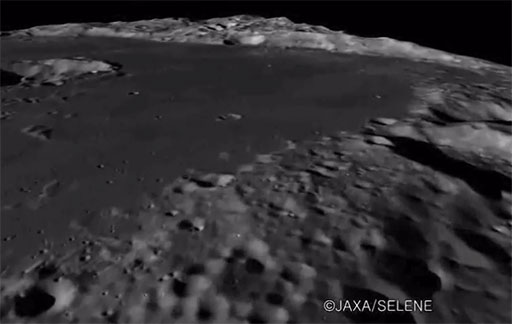3.4 Remote sensing – crater counting
Watch this Japanese simulated flyby of Mare Moscoviense. Pay specific attention to the difference between the brighter and darker areas in terms of the number and density of craters.
While the meteorites and returned samples give us invaluable information about lunar formation and the age of the Moon, most of its surface is unsampled and there is no way to get more rocks until future missions return samples. Still, we can learn a lot from these areas using the high-resolution images that have been returned of the Moon’s surface taken during missions such as the Lunar Reconnaissance Orbiter Camera (LROC). Indeed, the use of spacecraft to image the Moon produced a large quantity of remote-sensing data (images of the surface) that can be used to investigate the properties and characteristics of the unsampled areas.

